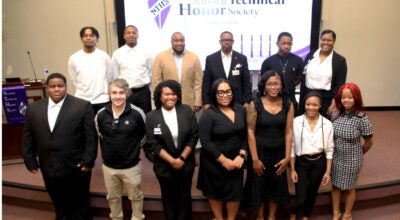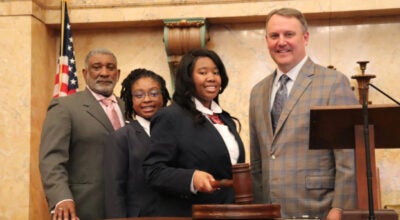6-inch shift cited in I-20 river bridge
Published 12:00 am Thursday, July 12, 2001
[07/12/01] Supports holding up the roadway of the Interstate 20 Mississippi River bridge have shifted nearly six inches out of position, matching pier movement on the U.S. 80 bridge that has kept that span closed to traffic.
The information was given to Vicksburg Bridge Commission members Wednesday in a report from HNTB, a Baton Rouge engineering firm. The report said the first two piers of the I-20 bridge are moving at about the same rate as Pier 2 of the county-owned river bridge.
“Apparently we’re not the only ones who are having a little movement,” commission chairman Winky Freeman said.
The three piers under the two bridges, all on the Mississippi bank of the river, have been slowly shifting toward the west for years. HNTB engineer Rudy McLellan said studies over the past year and a half have not eliminated any causes, but have also not revealed any specific data to suggest a cause.
“There have been many bridges up and down the Mississippi River that have moved,” McLellan said. “It’s stable right now. Six inches is not that much.”
The commission responsible for the upkeep of the 71-year-old U.S. 80 structure has been funding studies by HNTB and the U.S. Army Corps of Engineers to determine the cause of the movement in the second pier on the U.S. 80 bridge and sinking in a railroad support. Gill Gaupreau, bridge maintenance engineer with the Louisiana Department of Transportation and Development, said the State of Louisiana will soon begin a $2 million study of the river bank.
Funding for maintenance work of the I-20 bridge, including the study, is split evenly between Mississippi and Louisiana.
McLellan and Gaupreau said they are hoping the study, which will begin compiling data gathered by the different agencies, will reveal the cause of the shifting piers.
A yearlong study by the Corps has indicated that movement of the bank was not the cause of the movement of the piers. A separate hydrographic survey of the river bottom found no noticeable loss of material on the bank, leaving engineers scratching their heads.
During the annual inspection of the U.S. 80 bridge in January, it was determined that the bank had not moved, but that Pier 2 had moved an additional three-fourths of an inch during the time of the study. Now the pier, which has been moving a little each year since the bridge was built in 1930, has shifted nearly as much as it had in 1997 when the support was reset.
“It looks now just like it did before they fixed it,” said bridge superintendent Billy Wilson.
Gaupreau said his initial belief is that the movement is deeper under the surface and affecting a larger area than studied by the Corps. The Corps study had focused on the area directly under and around the U.S. 80 bridge.
“It appears to us that a large mass of land is moving,” Gaupreau said.
He said that next month, LADOTD will repair the I-20 bridge by jacking up a section of the span and resetting the rocker at the top of piers E-1 and E-2, but that a long-term solution will be paramount.
The repairs will be made at the top of the bridge piers where flexible parts allow for some movement in the structure caused by temperature and wind. The devices known as rockers can be reset to correct for the shifts in the piers.
Piers E-1 and E-2 are the first two supports on the east side of the I-20 bridge.
“If we did nothing,” Gaupreau said. “At some point there would be a change of elevation at one end of the span.”
He indicated that there was no danger of the bridge falling unless the problem was ignored for decades and there was a major event such as an earthquake. Gaupreau said the most noticeable effect to the bridge would be a bump or a drop off where the roadway meets the land.
Before the I-20 bridge opened on Feb. 15, 1973, the U.S. 80 river bridge was the only means of crossing the river in Vicksburg other than by boat. Since then, the I-20 bridge has become the primary means of crossing the river between Natchez and Greenville.
The U.S. 80 bridge has been closed to vehicular traffic since September 1998, but the railroad portion of the bridge, which is separate from the roadbed, remains open. It is the only railroad crossing of the river between Memphis and Baton Rouge.
HNTB has estimated a cost of $4 million to repair the pier and a railroad support that has been sinking at the U.S. 80 bridge. Separately, the cost to repair the roadway has been estimated at $2.8 million over a five-year period.
The engineering firm has continued to recommend that the U.S. 80 bridge remain closed to traffic until the cause of the movement is determined and corrected. Any repairs to the bridge would have to come from the commission’s reserves, about $5.5 million.





